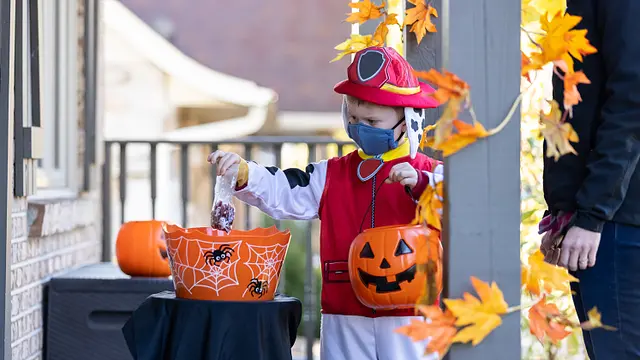02:22
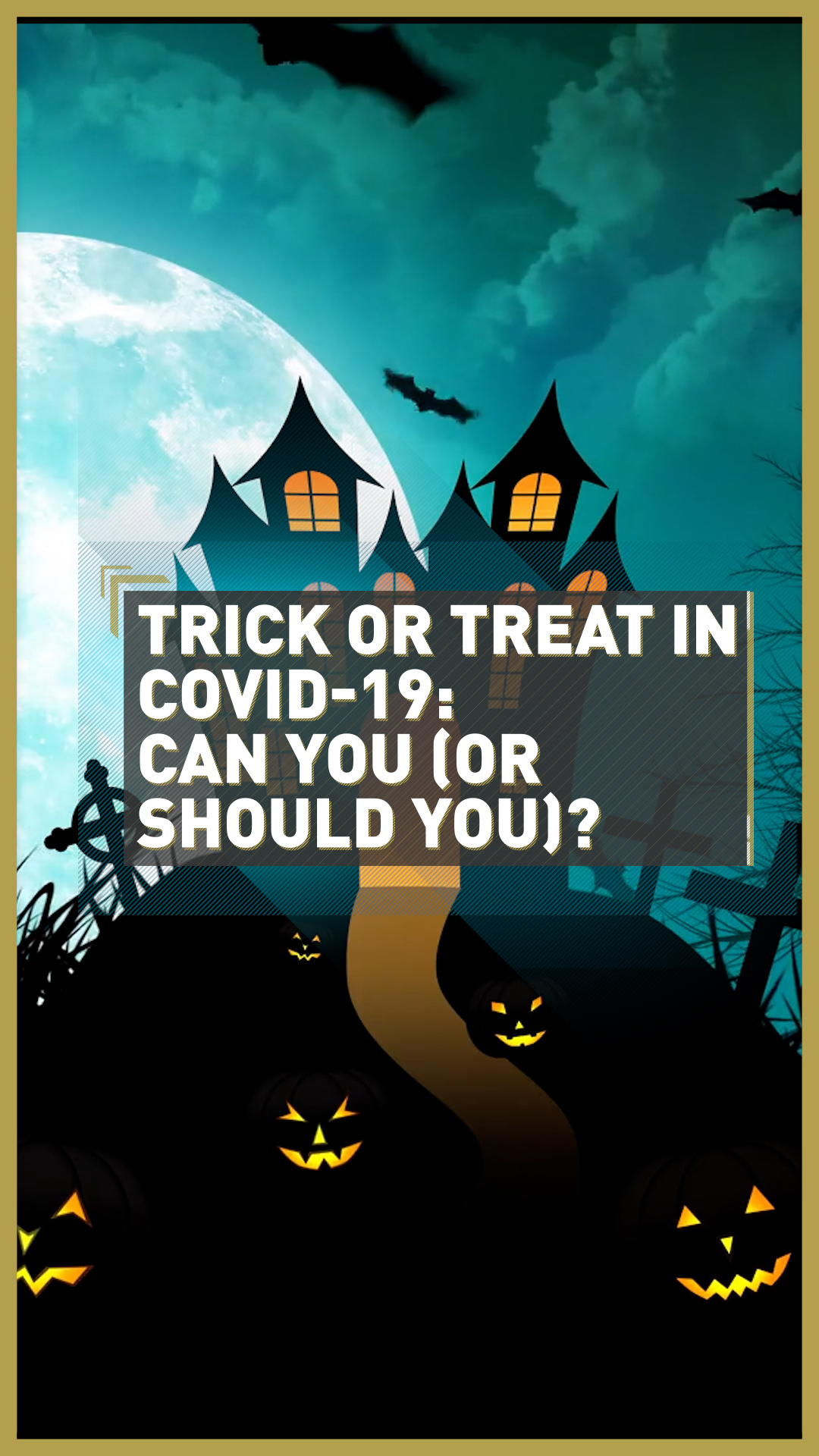
It's nearing that time of year again when things get spooky, carved pumpkins and cobwebs decorate front doors and people dress up in their best Halloween costumes.
But with the coronavirus pandemic and the restrictions still in place across Europe and worldwide to stop its spread, many aspects of the October 31 festivities have been put into question.
While this doesn't mean that Halloween is canceled (no need to panic), it does mean that some of the activities involved will look very different – if not avoided all together.
One of them is the tradition of trick-or-treating.

**CLICK: **
CAN A CENTURIES-OLD SYSTEM SAVE AUSTRIA'S ALPINE FARMERS?
What is trick-or-treating?
The traditional Halloween custom, usually for children, takes place in the evening of October 31 and involves youngsters dressed up in spooky costumes, going door to door and asking "trick or treat?" of anyone who dares answer.
They are then given a 'treat' by the homeowner, usually in the form of candy or chocolates. If they're not given a treat, the children play a 'trick' or harmless prank on the house instead.
The tradition of going house to house collecting food during Halloween, called 'guising' in Scotland and Ireland, goes back to the 16th century at least, as does the tradition of people wearing costumes during the festivities.
It was only until the 1920s that the custom became a tradition in North America, before the term 'trick or treat' became popularized and spread around the U.S. and Europe.
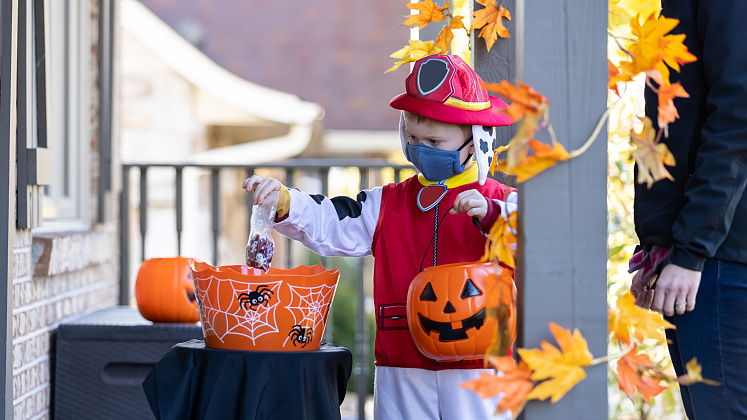
The Halloween tradition of trick-or-treating will look very different this year. /Onfokus/Getty Images via VCG
What are the rules for it during COVID-19?
While some European countries grapple with a resurgence of the virus and an increase in cases, the tradition is at risk from social mixing restrictions, lockdowns and curfews.
The Scottish government has urged families and children to avoid guising this Halloween in order to minimize the risk of spreading COVID-19.
"I know guising is a big part of Halloween and children will be sad to miss out, but as door-to-door guising brings an additional and avoidable risk of spreading the virus, our clear advice for families is to avoid it," said deputy first minister John Swinney in a statement.
"Under the current restrictions it is not possible to meet up indoors or in large groups outdoors, so the safest thing to do this year is to stay at home," he added.
Meanwhile, in other parts of the UK, the British government has said trick-or-treating can take place in some areas of England, depending on local COVID-19 measures in place under the government's three-tier system.
Prime Minister Boris Johnson's official spokesman said about the prospect of trick-or-treating being banned this year, that "the rules are those which apply to household mixing in general."
This means that people in areas of the country currently in the top 'very high' alert level, or 'Tier 3,' may not be able to go trick-or-treating, as the rules mean they cannot mix with other households both indoors or outdoors.
"The rules are there for all circumstances and people will have to use their common sense in ensuring they are following the rules," Johnson's spokesman added.
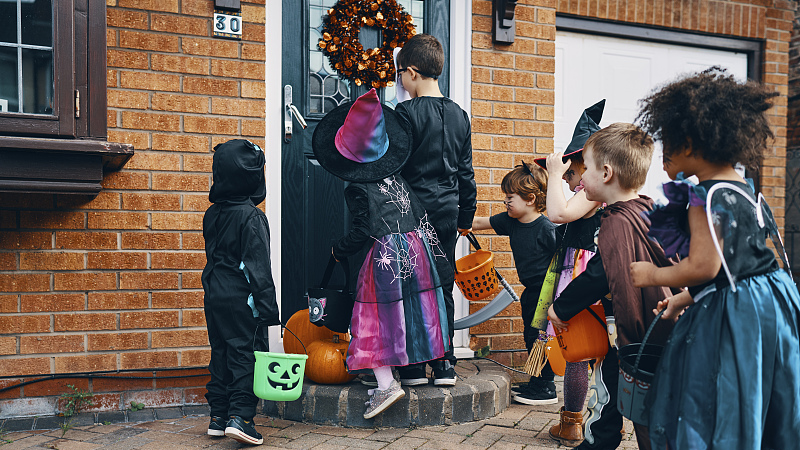
The tradition of trick-or-treating goes back to the 16th century in some parts of the British Isles. /Getty Images via VCG
In the north-west of England, Lancashire Police have told people to find alternative celebrations to traditional trick-or-treating in order to minimize the risk of the virus spreading.
As Lancashire is in the 'very high' alert level, police said "this means traditional trick-or-treating where you go and knock on someone else's door isn't allowed as it means people from different households would be socialising and mixing."
Elsewhere in Europe, as cases continue to rise and countries implement local lockdowns, new restrictions also mean that traditional trick-or-treating may not be possible.
In Belgium's capital, Brussels, tougher measures were announced, including an extended curfew and cultural and sport venue closures.
The premier of the Brussels region, Rudi Vervoort, told a press conference that "the situation is very serious, it cannot remain this way," urging them to support new measures.
"And, of course, there will be no door-to-door, no processions at Halloween — all of that, clearly, is also forbidden," Vervoort added.
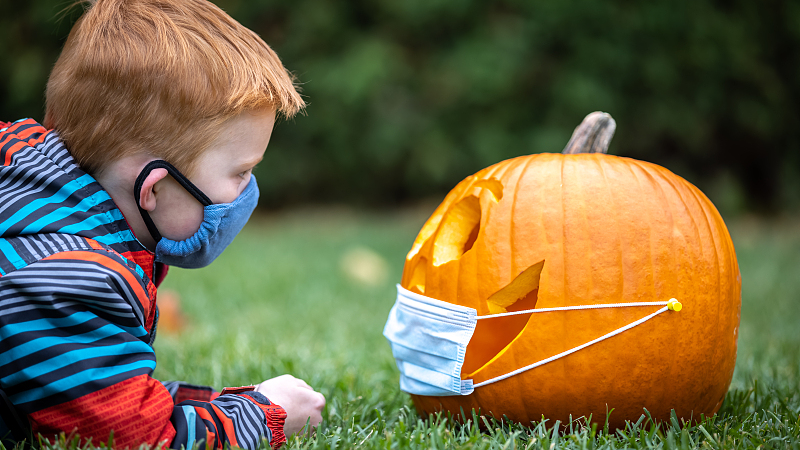
Some local areas have banned trick-or-treating this year where coronavirus cases are high in order to minimize the risk of spreading the virus. /Onfokus/Getty Images via VCG/
How to trick-or-treat safely
In areas where there has been no outright ban of the tradition, families and children are still urged to take precautions and act sensibly if they do choose to go trick-or-treating.
🎃 Limit the number of people in the group of trick-or-treaters in order to maintain social distancing, keeping in mind any local restrictions on mixing with non-household members.
🎃 Wear a face mask or covering. These can be incorporated into the costume for added effect, but follow health expert guidance on how to ensure your face covering is effective.
🎃 Maintain a safe distance when knocking on front doors.
🎃 Wash hands regularly if possible, or use hand sanitizer before and after touching doorbells or any other surfaces. Try to limit the surfaces you touch with your hands when you can.
🎃 Save your sweets until you get home so that you can wash your hands thoroughly before opening and eating them.
🎃 Avoid houses with elderly or vulnerable people if you are made aware of them, or pre-arrange a list of certain households that will not pose a risk to yourself or others.
🎃 And if you're on the other side of the door, make sure treats are individually wrapped to avoid contamination, or avoid putting them in a bowl for children to dip their hands in, which may increase any risk of transmission.
🎃 Safer yet, consider pre-packing individual bags of treats and leaving them at the front door for people to help themselves, as this significantly reduces contact and ensures social distancing.
So, however you choose to keep this Halloween tradition alive, ensure local guidelines are followed and take all the necessary precautions to ensure the safety and health of yourself and others.
 简体中文
简体中文

